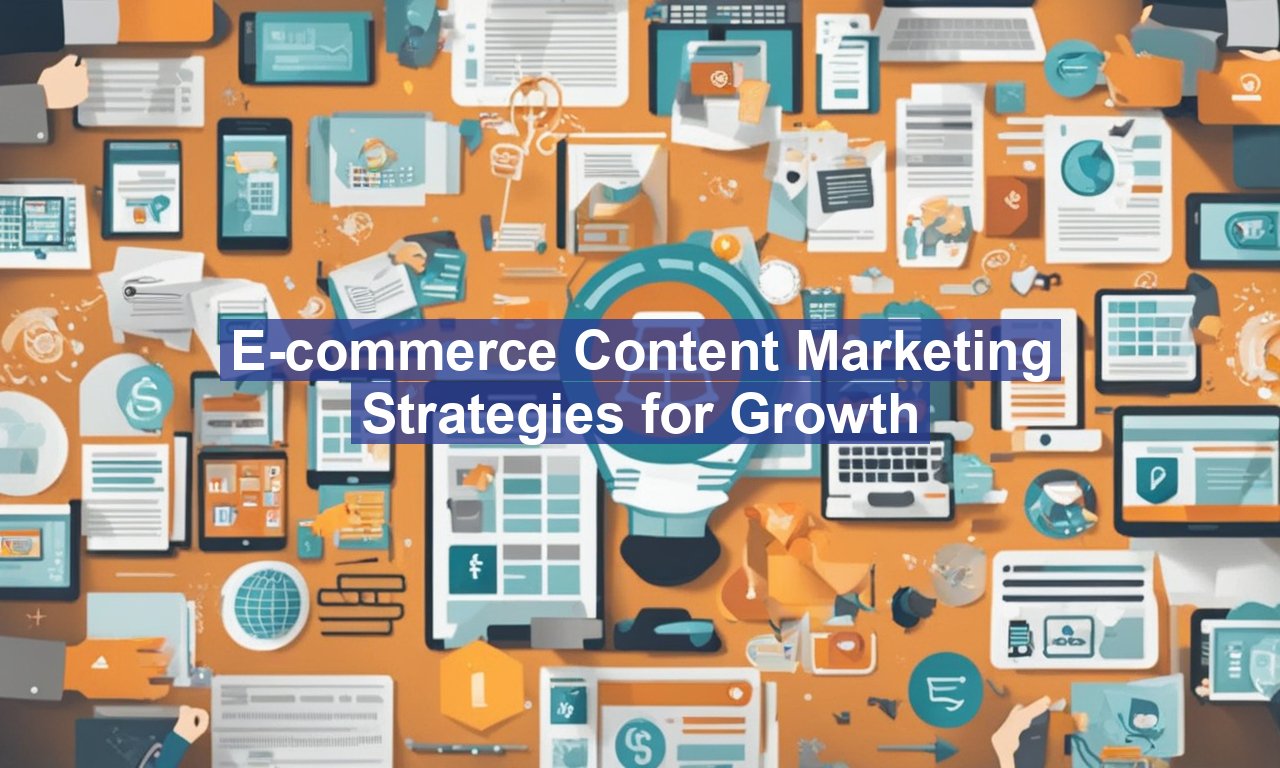E-commerce content marketing strategies for growth, Are you striving to boost your e-commerce business through effective content marketing strategies? Understanding & implementing the right tactics can propel your online store to new heights. From tailoring content to your audience to leveraging social media platforms, we’ll delve into comprehensive strategies that can set your e-commerce business on a path to remarkable growth.
E-commerce Content Marketing Strategies for Growth Step-by-Step Guide
Understand Your Audience
An indispensable foundation for success content marketing is knowing your audience. Your first task is to develop a buyer persona to guide your content creation efforts. Ask yourself:
- Who are my customers?
- What problems are they trying to solve?
- What kind of content do they consume?
By deeply understanding your audience, you can create content that resonates with their needs and preferences, ultimately driving more traffic and sales to your online store.
High-Quality, Valuable Content
Content quality is king. SEO and fancy marketing tactics are secondary if your content fails to provide value. Create a mix of content that includes:
- Blog posts that answer frequently asked questions or provide solutions to common problems
- Product videos showcasing features, reviews, and real-life applications
- Infographics that present data in a visually appealing system
An excellent example of valuable content is Neil Patel’s approach, who provides in-depth blog posts and detailed guides tailored to his audience’s needs. According to Neil Patel’s blog on content marketing, valuable content increases customer engagement and boosts SEO rankings.
SEO is Your Friend
Search Engine Optimization optimization is crucial for driving organic traffic to your electronic commerce site. Here are some essentials:
On-Page SEO
- Title Tags: Craft compelling and keyword-rich titles.
- Meta Descriptions: Write fascinating descriptions that include relevant keywords.
- Headings: Use Heading-1, Heading-2, & Heading-3 tags to structure your content.
Off-Page SEO
- Backlinks: Obtain high-quality backlinks from reputable sites.
- Social Signals: Share your content on social media to rise its visibility.
- Influencer Collaboration: Partner with influencers to further amplify your content.
Moz provides an excellent beginner’s guide to SEO that is worth exploring if you want more in-depth information.
Social Media Engagement
Social media platforms are potent channels for amplifying your content. Here’s how to do the most of social media:
Choose the Right Platforms
Not all social media platforms are created equal. Choosing a platform that aligns with your audience’s favor. For instance, Instagram (IG) is perfect for visually-driven content, while LinkedIn (LI) suits B2B interactions.
Consistency is Key
- Post regularly to maintain an active presence.
- Engage with your spectators by responding to comments & messages quickly.
- Use analytics to track performance & adjust your strategy according.
Buffer offers some fantastic insights on creating a robust social media strategy that you might find helpful.
Email Marketing
Don’t underestimate the power of email marketing. It’s an excellent way to keep your audience informed about new products, deals, and blog posts.
Build an Email List
Offer valuable content like eBooks, discounts, or exclusive access to build an email list. Utilize pop-ups & sign-up forms strategically placed on your website.
Segment Your Audience
Segment your email list based on factors like:
- Purchase history
- Customer behavior
- Demographics
Personalization
Personalize your email campaigns to address the recipient by their first name and tailor the content to their interests and previous interactions with your website.
User-Generated Content
UGC is a strong tool to build trust & authenticity. Encourage your shopper to share theirs experiences through:
- Reviews
- Testimonials
- Social media posts
You can even incentivize UGC by offering discounts or featuring customers’ photos on your social media pages or website.
Data-Driven Decisions
Leverage analytics to make data-driven decisions. Tools like Google Analytics & SEMrush can provide insights of:
- Traffic sources
- User behavior
- Content performance
Regularly review these metrics to tweak your strategies & ensure you’re meeting your audience’s needs.
In Summary
E-commerce content marketing strategies for growth involve understanding your audience, creating high-quality content, leveraging SEO, engaging on social media, utilizing email marketing, harnessing user-generated content, and making data-driven decisions. By integrating these strategies into your overall marketing plan, you stand to significantly boost your online store’s visibility, engagement, and revenue. Start implementing these tactics today & watch your e-commerce business flourish!
This article provides a roadmap for e-commerce businesses aiming to grow through content marketing. For more comprehensive insights, consider exploring HubSpot’s Ultimate Guide to Content Marketing for an in-depth understanding.


